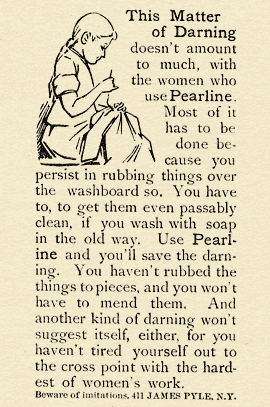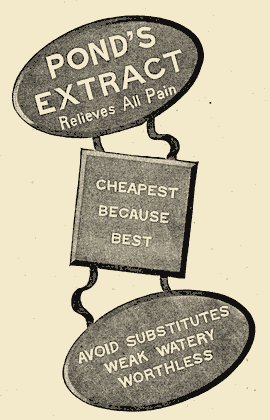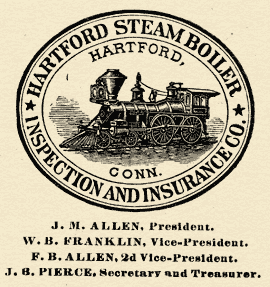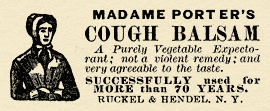Good Reading about Many Books Mostly by Their Authors
by T. Fisher Unwin
THE DOCTOR, HIS WIFE, AND THE CLOCK.
THE compiler of this article had long considered “The Leavenworth Case” the best-plotted story after “The Woman in White.” He was, therefore, glad to find that Mr. Wilkie Collins had himself read this story with such pleasure that he wrote the following letter to Mr. George Haven Putnam:—
‘ 90, Gloucester Place,
“Portman Square,
“London, W.
“December 6, 1883.“To George Haven Putnam, Esq.
“My Dear Sir,—Have I read ‘The Leavenworth Case’? I have read it through at one sitting. . . . Dozens of times, in reading the story, I have stopped to admire the fertility of invention, the delicate treatment of incidents, and the fine perception of the influence of events on the personages of the story. . . . It produced, in one word, such a strong impression on me that I looked at it for the second time, and the result was renewed appreciation. . . . She has my hearty congratulations on what she has already accomplished, and my earnest good wishes for the future.“Very truly yours,
“Wilkie Collins.”
The following extract from a Transatlantic newspaper is interesting enough to be quoted in full:—
“Anna Katharine Green Rohlfs is comparatively a young woman, for when ‘The Leavenworth Case’ was published ten years or so ago, she had not been long a graduate of Ripley College, in Vermont. She is described at that time as being a tall, graceful girl, with very decided ambitions and opinions. But she meant to be a poet, not a prose writer. In a letter to Mary R. P. Hatch, she wrote in those days: ‘I eschew prose. Poetry is my forte; storytelling is not possible to me.’ But she was a lively girl, even if she was a poet. This is the description Miss Hatch gives of one summer they spent together at Haverstraw, on the Hudson: ‘We were always together during the months I stayed in Haverstraw, night and day, for we shared the same room and the same pursuits.
“‘We walked, worked, and wrote together, and, although surrounded by staid, sober people, we indulged in a lark now and then, for we were only schoolgirls. We used to dress up in quaint, ugly, or curious costumes, go to the house of a lively friend, and amuse ourselves and her for hours, coming back to our room to write, sometimes until the “wee sma’ hours.” We wrote a story together, very ambitious and very long, in her part of which were forecast the Leavenworth heroines.’
“Miss Green’s first published piece was an ‘Ode to Grant.’ This is the way she wrote an intimate friend concerning her delight at this event: ‘I write because I know you will rejoice with me in my literary success, and I have had one. I have broken the ice. I am a poet. I am happy, dear, and thankful to the good God that my life opens so beautifully and hopefully before me, and I am trying to enjoy it while I can.’
“The following letter, written to a friend in New York, in answer to some questions concerning her literary history and methods, is so interesting that we reprint it entire:—
“‘I commenced to compose—that is, write little stories—almost as soon as I could read. It was so natural for me to do this that I supposed it an ordinary thing for children to amuse themselves in this way, and inveigled several of my mates into the task of composing and afterwards copying into little books such tales and minute novelettes as they were capable of producing. I myself in those early days preferred stories embodying rather startling situations, and I remember seeing my parents laugh over the complex stories I essayed in language so childish that the contrast between matter and manner must have been something astonishing.
“‘When I was about fourteen I began a story more elaborate than any I had before attempted. The hero was named Leavenworth, but the plot contained nothing which could in any way connect this tale with the one I afterwards published. I was absorbed in this childish effort, but as I was then engaged in studies demanding my full attention, my mother frowned upon my work, and I was forced to put it aside. I did so with tears, and thus ended the first chapter in my literary life.
“‘Though I have spoken so far only of stories, my ambition, then and later and always, was in the line of poetry. My first verse was written early, and if I had been asked then what my future was to be, I should have said, “I am going to write poetry.” And so, when my graduation was reached, I turned to my old employment to fill up the time I found lying too heavily on my hands; it was poetry I essayed. Not for years did I even dream of attempting a novel, though my mother frequently suggested it. Indeed, I went so far as to say I could not write one, feeling daunted by the number of words I should be forced to write to express what could be suggested so readily in a few lines of verse. But this I remember distinctly, that when the question came up I always qualified my refusal by saying internally, “But it I ever do write a story, it shall be one of intricate and complex plot.”
“‘“The Leavenworth Case” was my first book. I have often been asked if the plot was original. Yes. And if I saw the end before I began to write. Yes, again. Indeed, it was the end I saw first; just as in the play lately presented on the same theme. I always see the end. I plan my whole story before I put pen to paper, and this is the most fascinating part of the work. Otherwise I could never work each part into its proper place, and obtain a harmonious whole. “Marked Personal,” which I have lately finished, was the result of a couple of notes made years ago from facts taken from the newspapers. One was the concerted suicide of three girls, schoolmates, and the other the account of a lad travelling with a party through the Western wilds, who, seeing he was a burden, and that his feebleness was likely to delay them, begged them to kill him, so that they might hasten on to safety. These diverse facts, working in my brain, led to the formation of this story; how, I do not know any more than you, for, after the period of formulating a plot is passed, I regard the whole operation with surprise, and wonder how it all came to me.
“‘I regard this book as ranking with my strongest efforts. Il was written under difficulties which have, I fear, left more or less impress upon it, in the way of disjointed sentences here and there. While correcting proof—an operation in which an author is invariably hurried—two of my children fell sick, and it was a common thing for me to be called from my work to attend to wants quite remote from the subject in hand. I often laughed with my husband over the fact that the public would never excuse a loose sentence from the fact that I was summoned from my desk perhaps three times during the formation of it.
I was two years writing “The Leavenworth Case.” Having up to this time been engaged entirely in the writing of verse, I found it most difficult to express myself in sound, good prose. I had to learn the art, and do not consider myself now as being perfectly at home in it. But it no longer takes me two years to write a book. I write in the morning, and, when engaged on a novel, spend from three to four hours at my desk. Like other writers of my class, I find it hard to begin, and equally hard to leave off. I love my work, but feel an intense relief when it is completed. I so fear my enthusiasm will flag before the end is reached, and I can do nothing without enthusiasm.
“‘At present my attention is chiefly drawn to the drama, my husband having returned to the stage this winter and made such a decided hit in the character of Harwell (the guilty secretary in “The Leavenworth Case”) that I cannot but feel a desire to write him a play in which he may have an opportunity to show himself in a part equally strong but more sympathetic. Whether or not this will eventuate in anything has not yet been communicated to me by the muse.’”
The author has furnished us with a brief account of her literary method. It will be observed that she does all that is necessary to cultivate an air of authenticity in what she writes. The result is that her famous character, Ebenezer Gryce, who reappears in “The Doctor, his Wife, and the Clock,” is a true detective, touched with humanity—ingenious and successful, but not too successful to be sometimes foiled. Her criminals are creatures of circumstance rather than hard-hearted wretches. They have an air of relief at being tracked down—a sure sign of a redeeming flaw in their devilry. Her circumstances, moreover, though stranger than fiction, are not stranger than truth. Mrs. Rohlfs says:—
“Any incident or remark is apt to kindle a train of thought in me, and give impetus to a plan for a story that may have lain in my mind for from one year to five. ‘Doctor Izard,’ my last work, originated in a startling occurrence in one of the middle Southern States. In ‘The Doctor, his Wife, and the Clock’ there were no facts for a foundation. The truth is that I first wrote the story, and then found the facts. For long after writing it I learned from friends of mine that a physician had been of great service to them, although totally blind. Not only that, he could not remember the time when he saw. [The now living physician performs surgical operations.] Besides the remarkable skill of this physician (now living), the incidents in ‘The Doctor, his Wife, and the Clock’ must not be looked on as being exaggerations or impossibilities. Had I made my ‘Dr. Zabriskie’ do more than he is called upon to do in the story, I might have reason to fear the comments of reviewers, although I might be able to prove everything to be within the range of experience. As it is, he is a character who had and has my sincere sympathy, for how else could one regard the jealousy of the handsome blind physician and the outcome of so fatal a mishap?”





